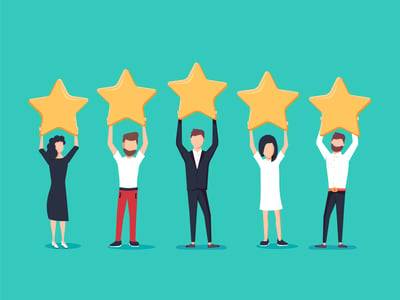January 30, 2020
 by Anatoly Sharifulin / January 30, 2020
by Anatoly Sharifulin / January 30, 2020
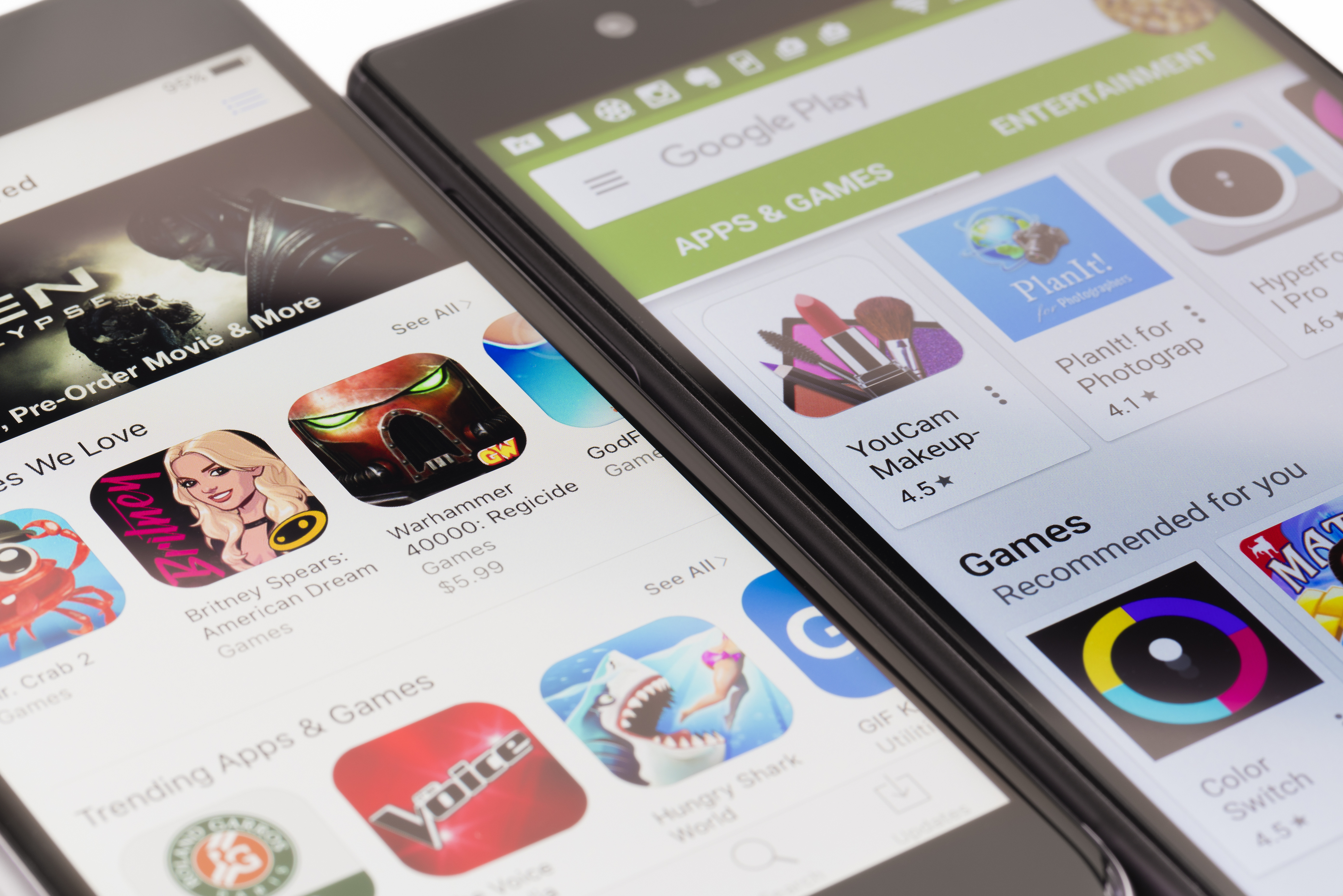
Many app developers think that creating an app in English is enough to reach a global audience.
However, by following this strategy, you are missing over 90% of potential app downloads. Mobile app localization may be just your ticket to entering new markets and attracting more users.
In this article we’ll look into the steps of mobile app localization, discover the difference between localization and internalization, and talk about how to customize your app for the local audience in a specific app store.
Mobile app localization refers to the process of adopting your app to different languages, cultures and markets. It goes beyond simply translating your app page and interface. If you are looking to connect with users in their playing fields, your app should appear as if it is a native app there, which includes, for example, showing dates, times, and numbers in formats used in the region.
Both the App Store and Google Play are available in more than 150 different countries. When deciding on which markets to localize your app for, data from industry studies and analytical tools can help you immensely:
Full app localization, when both the app page and user interface are translated and customized to regional standards, is essential to drive retention. But changing the interface for such markets as Arabic can take months because of the particularities of right-to-left (RTL) interfaces.
If you want to trial new markets without committing to full app localization you can perform the minimum viable localization, which includes: app title, subtitle, and keywords; screenshot, annotations, and CTAs; and app descriptions. Let’s see how to localize your app page step-by-step.
Define your targeted languages and hire localization specialists. You won’t be able to do a proper app localization without working with specialists. If you don’t have a budget for that, at least hire someone to check and edit the automated translations. It usually costs around 30-50% of translation services.
Let’s be straightforward: a literal translation of keywords doesn't work well. If some search terms are popular with the English-speaking audience, it doesn’t mean that their literal translation will bring you search traffic from other regions.
Use ASO Tools to check your strategic keywords for relevance and popularity:

Image source: appfollow.io
Most ASO tools also generate keyword suggestions based on what users are searching for on app stores and what is working for your competitors. Use such lists to expand the semantic core of your app in the target language:
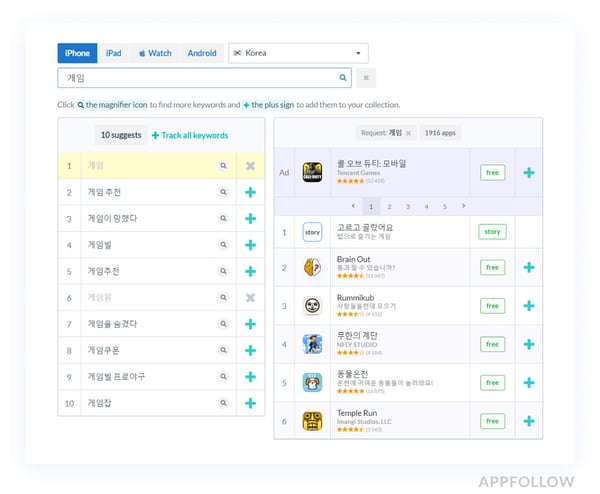
Image source: appfollow.io
Another essential tactic for finding keywords for your app in foreign languages is competitive analysis.
Start by familiarizing yourself with rivals’ titles, subtitles, and app descriptions. Implementing keywords that bring traffic to other apps similar to yours can make your app localization even more successful. Also, check other app page elements. See how these apps change their art assets, colour pallette and CTAs to better present their product to local users.
Mobile app localization and indexing processes across different countries are organized differently in the App Store and Google Play.
You can see all localizations available for your iOS apps in the App Store Connect in the section My Apps > App Information. The languages your app is already localized into will be shown first in the list (Localized), followed by the ones you can still add (Not Localized). Apple periodically makes available new languages for localization.
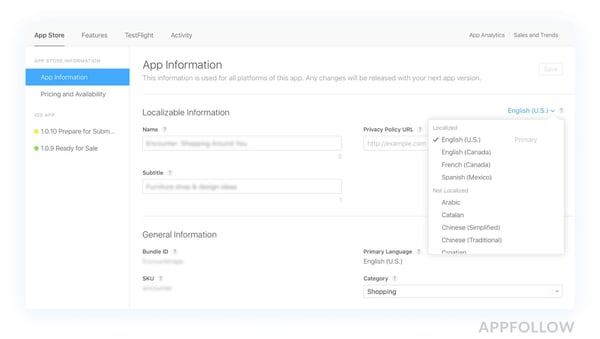
Image source: App Store Connect
To add a new iOS app localization you will need to create a new app version. When it’s done you will be taken to the App Information page, where you need to fill in the app title and subtitle, description and keywords for the new app version. The information will start indexing only when the new version is released.
RELATED: Learn more on the Apple website.
There are two main rules about the keywords section localization in the App Store:
Some languages in the App Store index across multiple countries. Additional languages have the same search weight as the primary language. Check the list of additional languages available for your target countries and use them to get more search visibility and users.
The process of adding Android app localization is a way easier and faster. You won't have to wait until your next app release. All you need to do is to add a localized version of the app title, short and long and description in Google Play Console.
RELATED: Learn more about Android app localization.
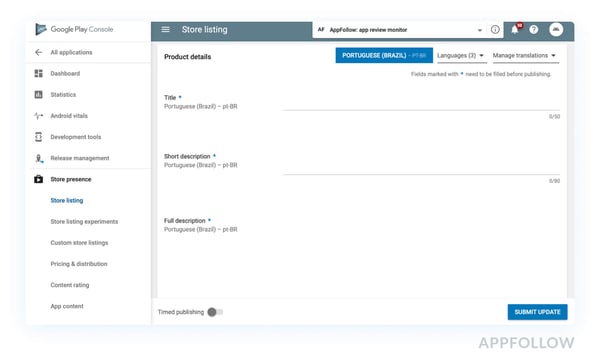
Image source: Google Play Console
When performing app localization you can do a proper translation of the app page and user interface and implement all rights keywords, but the app still won’t look “native” to local users. It’s when app internalization comes into play.
Internationalization is the process of adopting your app to culture-specific preferences. To internationalize your app page ensure that your app icon, screenshots and videos for app previews, are regionally relevant. If needed, ask local specialists to help you navigate different markets’ preferences.
Here’s for example the Hotellook app, a meta-searching app for hotels across all booking agencies. Compare versions of their app screenshots for the Arabic and Taiwanese markets.
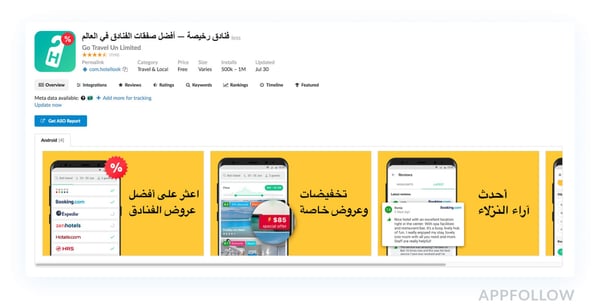
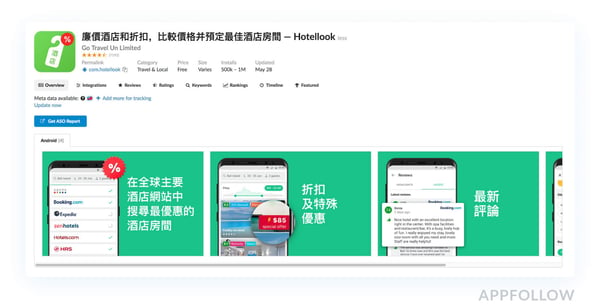
Image source: appfollow.io
You can see that the screenshots have different colors. There is a larger text size used on the screenshots in Taiwanese version according to the market preferences. The letter H on the app icon that stands for Hotel was also translated; this small change brought to the app 20% increase in conversions to installs in the Taiwanese market.
Localizing and Internationalizing your app can help improve your app visibility in the local stores and make the right first impression. However, in many cases, to encourage the target audience to download your app, you will need something more convincing: the assurance that other people like your app.
Seventy-nine percent of stores' users check ratings and reviews before downloading an app. That said, working with app reviews and adopting the best reviews management strategies is essential to earn local users’ trust. It will show your prospects that you care about their feedback, willing to improve the product, and they can always contact you and get a reply if they experience any problems with your app.
Managing app reviews in multiple languages can be challenging. Especially if you are not ready to hire customer support agents with local language knowledge right away. Some tools use auto translate features that can help you transcend language barriers and understand every single review.
If you are looking for ways to attract more users consider mobile app localization. Otherwise, your app can easily end up flourishing in a foreign climate.
Now that you're an expert on mobile app localization, find all available mobile app development services on the market and choose the right one for your needs today.
CEO & Co-founder at AppFollow, the tool that helps apps become top-ranked on app stores. Anatoly has been involved in the development and promotion of mobile apps since 2009. Started off as a developer, he quickly grew into a head of product and launched his own mobile startup in 2013.
A huge challenge that faces app developers today is saturation of the market.
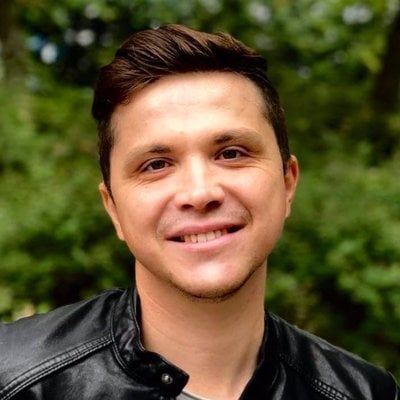 by Anatoly Sharifulin
by Anatoly Sharifulin
It's evident how important interacting with your users and responding to customers is for...
 by Anatoly Sharifulin
by Anatoly Sharifulin
For app owners, staying on top of every single project can be a challenge.
 by Anatoly Sharifulin
by Anatoly Sharifulin
A huge challenge that faces app developers today is saturation of the market.
 by Anatoly Sharifulin
by Anatoly Sharifulin
It's evident how important interacting with your users and responding to customers is for...
 by Anatoly Sharifulin
by Anatoly Sharifulin


